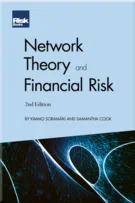CCAR and Capital Management: Relationship with Economic Capital, Regulatory Capital and ICAAP
Dan Ryan and Pranjal Shukla
CCAR and Capital Management: Relationship with Economic Capital, Regulatory Capital and ICAAP
Introduction
CCAR and Stress Testing as Complementary Supervisory Tools
Financial Institution Perspectives on the Evolving Role of Enterprise-wide Stress Testing
The Advancement of Stress Testing at Banks
Designing Macroeconomic Scenarios for Stress Testing
Determining the Severity of Macroeconomic Stress Scenarios
Data, Analytics and Reporting Requirements: Challenges and Solutions
A Multi-view Model Framework for Stress Testing C&I Portfolios
Stress Testing Credit Losses for Commercial Real Estate Loan Portfolios
Stress Testing and Retail Portfolios
Market and Counterparty Risk Stress Test
On Operational Risk Stress Testing
Quantitative PPNR Modelling
Banks’ Governance and Controls over Internal Capital Adequacy Processes
CCAR and Capital Management: Relationship with Economic Capital, Regulatory Capital and ICAAP
EU-wide Stress Test Versus SCAP and CCAR: Region-wide and Global Perspectives
In the post-financial crisis world, capital planning and capital management have taken an ever-increasing prominence, not only from the regulators’ point of view but also internally as large banks in the US have dedicated more resources and attention to capital adequacy. The Federal Reserve’s Capital Plan Rule1176 Federal Register 74631–48. and the Comprehensive Capital Analysis and Review (CCAR, the Federal Reserve’s supervisory programme for assessing large banks’ capital plans and capital adequacy processes) have emerged as the most important capital assessment programmes being implemented and continuously enhanced.
While the focus has been on CCAR, other similar capital management initiatives of varying degrees of maturity have already been implemented at large banks. Examples include regulatory capital and Basel-driven initiatives (including Basel I, II, II.5 and III) and banks’ internal views of risk-based capital requirements primarily driven by economic capital programmes. As banks continue to enhance and evolve these programmes, it is important to understand the context, objectives and applications of each, as well as the relationships among them and how they can be
Copyright Infopro Digital Limited. All rights reserved.
As outlined in our terms and conditions, https://www.infopro-digital.com/terms-and-conditions/subscriptions/ (point 2.4), printing is limited to a single copy.
If you would like to purchase additional rights please email info@risk.net
Copyright Infopro Digital Limited. All rights reserved.
You may share this content using our article tools. As outlined in our terms and conditions, https://www.infopro-digital.com/terms-and-conditions/subscriptions/ (clause 2.4), an Authorised User may only make one copy of the materials for their own personal use. You must also comply with the restrictions in clause 2.5.
If you would like to purchase additional rights please email info@risk.net








